Understanding Woodpecker Predators and Ecosystem Dynamics
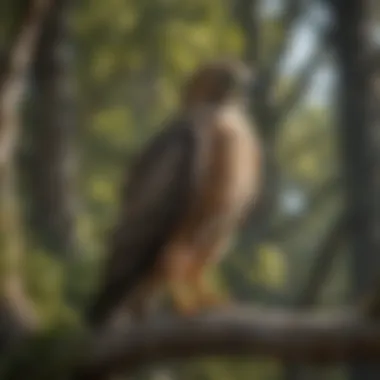
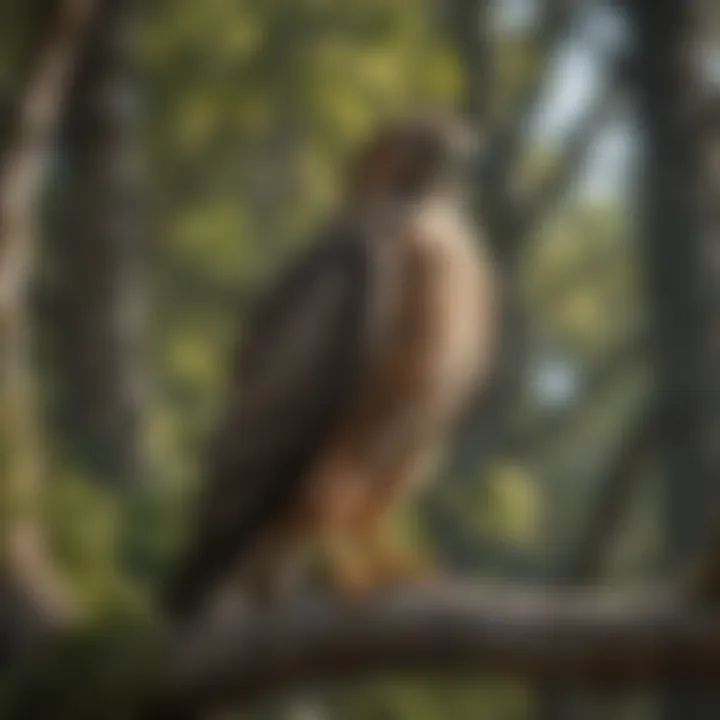
Intro
Woodpeckers are fascinating birds that fill our woodlands with dynamic tapping sounds and vibrant colors. With their unique ability to drill into trees for food and nesting, they play a crucial role in maintaining the health of forest ecosystems. However, these remarkable creatures also find themselves in varying degrees of danger from natural predators. Understanding who these predators are, and how they interact with woodpeckers gives us significant insights into ecological relationships and conservation necessities.
In this discussion, we will explore the types of predators that threaten woodpecker populations and examine the behavioral adaptations woodpeckers develop to mitigate these risks. By delving into these natural interactions, we can highlight the importance of preserving woodpecker habitats and the functions they serve within their ecosystems. This exploration is not just academic; it has real repercussions for conservation efforts in our growing urban landscapes that often encroach upon natural habitats.
Understanding the Pest
To grasp the entire plight of woodpeckers, it’s essential to recognize the predators that might hunt them. A variety of species prey on woodpeckers, from other birds to mammal hunters and even reptilian threats. Identifying these threats provides a clearer picture of the challenges woodpeckers face.
Identification
Among the notable predators of woodpeckers are:
- Hawks: Birds like the Cooper's hawk are agile, keen hunters that can capture a woodpecker mid-flight.
- Owls: Nocturnal hunters, such as the barred owl, often have the element of surprise.
- Snakes: Some arboreal snake species can be a lurking danger, especially during nesting seasons.
- Mammals: Raccoons and domestic cats can hunt woodpeckers, particularly young birds that are less vigilant.
Life Cycle
Understanding the life cycle of these predators can shed light on their hunting habits. For instance, many hawks and owls are seasonal hunters. They tend to breed in spring and summer, aligning their hunting instincts as woodpeckers are more active during these times.
"Realizing the predator's life cycle can help us understand peak woodpecker vulnerability periods."
Why It Matters
By recognizing both woodpeckers and their predators through an ecological lens, we lay a foundation for informed conservation efforts that address specific challenges faced by these birds in their habitats.
Dissolving the Balance: Why Predation Matters
The predator-prey dynamics aren't simply barriers for woodpeckers; they are integral to ecosystem health. Each predator contributes to the balance, maintaining woodpecker populations within sustainable limits while ensuring that other species do not face overpopulation. Understanding this relationship pushes us toward nuanced approaches to conservation that respect ecological cycles.
Behavioral Adaptations
Woodpeckers have evolved intriguing adaptations to safeguard themselves. They often employ:
- Camouflage: Many species blend into their surroundings, making spotting them more difficult.
- Early Warning Systems: Their instinctive alarm calls alert fellow birds and potential threats, providing time to escape.
- Nesting Choices: Selecting higher or more concealed nesting sites can stave off predators.
As we dive deeper into these factors, we will discover the nuanced layers of woodpecker survival and the implications for their habitats and populations. Understanding these natural interactions equips us better towards thoughtful conservation initiatives that benefit both woodpeckers and their predators.
Next, our focus will shift toward effective strategies for minimizing human-induced threats while enhancing the symbiotic balance that woodpeckers and their predators share.
Preamble to Woodpecker Species
Understanding woodpeckers offers insight into an extraordinary group of birds that play vital roles in their ecosystems. At a glance, these avian architects are more than mere pests on trees. Their behaviors and adaptations have evolved over time, tailored for their unique lifestyle of foraging for insects and creating nesting sites in tree trunks. This section serves as a springboard to grasp the broader ecological relationships we will explore throughout the article, particularly how their existence intersects with that of their predators.
Overview of Woodpecker Anatomy
Woodpeckers possess a body design that is remarkably specialized for their way of life. Their long, sharp beaks are not just for show; they are ideally fashioned to drill into wood, allowing these birds to access hidden insects and create nesting cavities. This drilling behavior showcases an excellent example of evolutionary innovation.
Moreover, the structural composition of woodpecker skulls is noteworthy. The skulls have a thickened bone structure that absorbs the shock from pecking, protecting their brains from potential damage. Also, their feet are zygodactyl, meaning they have two toes facing forwards and two facing backward. This unique arrangement helps in gripping tree bark tightly.
It's also essential to mention their wings. Woodpeckers have relatively short and pointed wings, adapted for quick, agile flight rather than long, gliding trips. These features are crucial for maneuvering through dense foliage, especially when dodging potential predators.
Distribution of Woodpecker Species
Woodpeckers can be found across various habitats around the globe, which is a testament to their adaptability. They thrive predominantly in forested areas but are also spotted in savannas, grasslands, and even urban gardens. The presence of specific tree types greatly influences where distinct woodpecker species establish themselves. For instance, some woodpeckers prefer coniferous forests, while others may be more common in deciduous woodlands.
- North America: Home to a wide diversity of woodpecker species, including the striking Northern Flicker and the powerful Pileated Woodpecker.
- Europe: Species such as the Great Spotted Woodpecker roam various habitats, often seen in parks and gardens.
- Asia: In regions like the Himalayas, one might encounter the critically endangered White-naped Woodpecker.
It’s important to note that local availability of sufficient food sources, like insects and tree sap, significantly affects where woodpeckers can thrive. This variability in habitat preference creates a fascinating dynamic in their interactions with predators, as certain species become more vulnerable in specific environmental contexts.
The diverse distribution of woodpecker species highlights their ecological flexibility and the intricate balance of the environments they inhabit.
Understanding these foundational aspects of woodpecker biology and distribution lays the groundwork for examining how various predators influence their populations and behaviors.
Understanding the Predator-Prey Dynamic

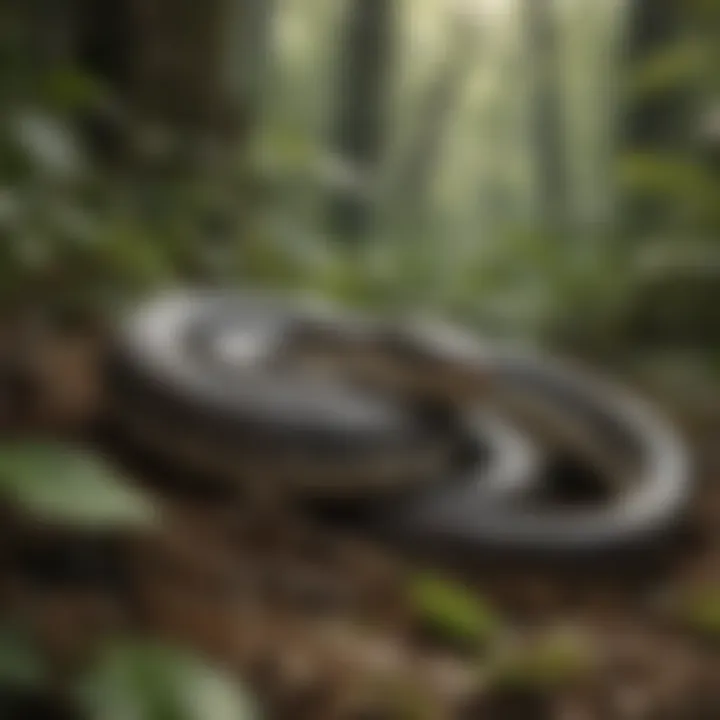
In the realm of nature, the interaction between predators and their prey shapes not just the lives of individual species but the whole ecosystem. This relationship is pivotal; understanding it offers key insights into the behaviors and survival strategies of woodpeckers, which often find themselves on the menu of a variety of predators. The complexity of predator-prey dynamics is essential for grasping how these colorful birds navigate the trials of life amidst threats, both aerial and terrestrial.
The Role of Predation in Ecosystems
Predation plays a dual role in ecosystems, acting both as a force of control and as a catalyst for evolutionary change. In a healthy system, predators maintain the population balance of their prey, indirectly supporting the growth of vegetation and contributing to biodiversity.
- Population Control: Without predators, certain prey species can overpopulate, depleting resources. For example, many herbivores thrive when unchecked, which could lead to overgrazing and subsequent plant decline.
- Natural Selection: Predation pressures lead to evolutionary adaptations. Woodpeckers, with their unique foraging techniques, have developed specific behaviors to evade predators—from swift flight maneuvers to their ability to hide within tree bark.
This ongoing dance of survival often hinges on adaptation. The physical attributes of woodpeckers—like their strong beaks and specialized feet—have been honed over time not just for feeding but also as a defense mechanism against predatory threats.
Predation Pressure on Avian Species
The pressure exerted by predators isn’t solely about who eats whom; it also affects the habits, nesting sites, and even reproductive success of woodpeckers. The statistic related to avian predation can be startling: many bird species experience significant mortality during their early life stages due to predation.
- Nesting Ground Vulnerability: Woodpeckers usually hollow out trees to create nesting sites, but this sometimes makes them easy targets for larger birds like hawks or owls, and even ground-based threats like raccoons.
- Fledgling and Adult Survival: Young woodpeckers, termed fledglings, are particularly vulnerable. Predation during this stage can be devastating. The likelihood of mortality increases due to their inability to fly and escape quickly.
The balance here is delicate; woodpecker populations thrive when they evade these threats, but they also face the constant reminder of their vulnerability. As they adapt, they become not just survivors but invaluable indicators of ecosystem health.
"In nature, survival is not about the strongest but rather those most adaptable to change."
The dynamic maintains a rhythm, where each species must adapt, evolve, and sometimes innovate to stay one step ahead of their predators. This interplay signifies the interconnectedness of species within their habitats, underlining the importance of preserving this balance as we explore the broader implications of predation on woodpecker populations.
Key Predators of Woodpeckers
Understanding the key predators of woodpeckers is essential for recognizing how these interactions shape the overall ecology. Predation pressures can significantly influence a woodpecker's behavior, population dynamics, and survival rates. Each predator plays a unique role in maintaining the balance within their habitats. This section aims to unravel the complexity of these relationships while shedding light on how these predators impact woodpecker populations and their environment.
Mammalian Predators
Tree Climbing Animals
Tree climbing animals are a notable group of mammals that pose a threat to woodpeckers. Particularly, species like raccoons and some species of squirrels exhibit remarkable climbing abilities. Their capacity to navigate trees not only gives them access to woodpecker nests but also makes them a persistent threat during nesting season.
A key characteristic of these mammals is their dexterity. Raccoons, for instance, have highly adaptable forelimbs that allow them to manipulate objects with ease, making it a challenge for woodpeckers to safeguard their nests. These climbing mammals are an interesting choice for this article due to their significant role in the predation of both eggs and fledglings. While they contribute to the natural balance, their predation can have a detrimental effect on woodpecker populations.
Additionally, one unique feature of tree climbing animals is their intelligence; they can navigate through complex environments to find food sources. This adaptability enhances their efficiency as predators, which often results in reduced woodpecker populations in areas where they thrive.
Domestic Cats
Domestic cats are another mammalian predator that has been a topic of considerable debate. Often seen as harmless pets, these felines can pose a significant threat to local wildlife, including woodpeckers. The playful behavior and hunting instincts of cats naturally drive them to stalk and ambush birds.
The key characteristic of domestic cats is their stealth and agility. They can sneak up on woodpeckers, making them a surprisingly effective hunter despite being domesticated. This attribute makes them a popular choice for discussions around predation, as many households harbor these pets unaware of the ecological implications.
One unique trait of domestic cats is their wide distribution; they thrive in urban and rural settings alike. This omnipresence means that their impact on woodpecker populations can be profound, especially in densely populated areas where natural predators may be scarce.
Avian Predators
Raptors
Raptors, like hawks and owls, are among the top avian predators of woodpeckers. These birds of prey are renowned for their hunting prowess and keen eyesight, making them formidable threats to woodpeckers. The ability of raptors to soar high above the treetops allows them to spot potential prey from great distances.
A characteristic that defines raptors is their powerful talons and sharp beaks, which they use to capture and consume their victims. This makes them a crucial part of the predator-prey dynamic discussed in this article. Their hunting behaviors not only target adult woodpeckers, but also their eggs and young fledglings, directly impacting population dynamics.
Moreover, a unique feature of raptors is their aerial agility. They are capable of intricate flight maneuvers, allowing them to navigate through trees and chase down evasive birds effectively. This efficiency emphasizes the importance of understanding how raptors fit into the broader ecosystem, as they are not just random threats but active players in maintaining ecological balance.
Crows and Magpies
Crows and magpies also represent significant threats to woodpecker populations. These birds are known for their intelligence and adaptability in various environments. Their social behaviors aid them in taking down even the most agile woodpecker. In groups, they can be quite overwhelming for a solitary bird.
A unique aspect of crows and magpies is their problem-solving abilities. This makes them proficient at exploiting weaknesses in woodpecker defenses. During nesting, these predators can pose a severe risk; their complex vocalizations and social structures work in their favor when attempting to locate and raid nests.
They are a beneficial focus in this discussion, given their prominent role in avian predation. Understanding how these creatures interact with woodpeckers provides insights into broader environmental dynamics, encouraging further research on conservation efforts.
Reptilian Threats
Snakes
Snakes are often overlooked but represent a silent yet effective predator of woodpeckers. When considering the predator-prey dynamic, their stealth and patience are critical traits. Various snake species, particularly tree-dwelling ones, can directly threaten woodpecker nests in search of eggs.
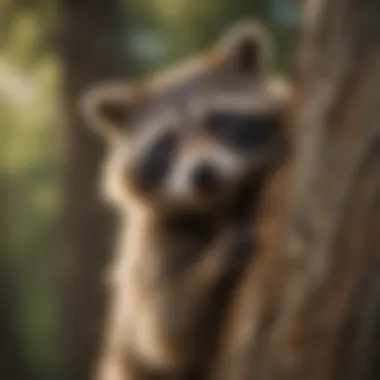

The key characteristic of snakes is their ability to remain concealed. This silent presence allows them to ambush unsuspecting woodpeckers, particularly during periods when these birds are most vulnerable while nesting. Their contribution to the topic is particularly relevant in understanding the underlying dangers that woodpeckers face.
A unique feature of snakes is their flexibility and stealth, which enables them to navigate through tight spaces within trees, making it difficult for woodpeckers to avoid them altogether. While they are a natural part of the ecosystem, the threat they pose cannot be ignored, particularly in areas where woodpeckers are abundant.
Lizards
Lizards may not immediately spring to mind as a significant predator of woodpeckers, yet certain species can threaten young woodpeckers and eggs during vulnerable stages. Their agility and ability to navigate trees also add a layer of complexity to the predation dynamics.
The key characteristic of lizards is their camouflage, which allows them to blend in seamlessly with their surroundings. This is an appealing element to consider when analyzing the predation of woodpeckers, adding to their challenges in evading these lesser-known threats.
One unique feature of lizards is their quick reflexes, which make them adept at catching small prey. While they may not pose as significant a threat as larger predators, their presence highlights the range of dangers that woodpeckers encounter in their daily lives.
Behavioral Adaptations of Woodpeckers
Understanding how woodpeckers adapt their behaviors in response to predation is vital for grasping their survival strategies. These adaptations not only showcase the incredible resilience of these birds but also highlight how they interact intricately within their habitats. Behavioral adaptations allow woodpeckers to reduce the risk of becoming prey while maximizing their chances of securing food and nesting sites.
Foraging Strategies
Woodpeckers are known for their remarkable foraging techniques, which vary between species. They primarily feed on insects hidden within tree bark, but there's a lot more to their approach than just pecking at the surface. One common strategy is to tap on the wood in a rhythmic fashion; this not only helps to dislodge insects but also serves as a form of communication among woodpeckers.
Interestingly, woodpeckers have learned to adjust their foraging depending on predation pressure. For instance, when in areas with high concentrations of raptors, they may forage more cautiously, sticking to edges of forests where visibility is better for spotting threats. Moreover, they often engage in what can be described as 'lookout foraging'; when one woodpecker searches for food, others may remain watchful for predators. This communal effort increases the survival chances of the group, allowing them to benefit from shared vigilance.
In addition to these strategies, woodpeckers have developed strong climbing abilities, enabling them to navigate vertically along trees with ease. Their specialized toe arrangement, which includes two toes facing forward and two backward, offers a solid grip, making it difficult for many predators to catch them.
Nesting Habits
Nesting habits of woodpeckers also reveal adaptations tailored to avoiding predation. Unlike some birds that build nests from twigs or mud, woodpeckers excavate cavities in trees for their nests. This provides a natural shield against many predators that can't access the nest easily. With sharp beaks that can drill deep into wood, woodpeckers choose dead or decaying trees, which are not only easier to penetrate but also less likely to attract unwanted visitors.
Moreover, the location of nests is carefully considered. Some species will nest in tree hollows high above the ground, far from ground-dwelling predators. In contrast, others opt for tree trunks that are less frequented by predatory birds or mammals. Additionally, they often select nesting sites in areas with plenty of nearby forage, which allows for efficient feeding without straying too far from the home base.
Overall, behavioral adaptations play a crucial role in how woodpeckers navigate their ecosystems. They continuously adapt to their environment, ensuring their populations remain robust despite natural threats. Understanding these behaviors isn't just about the woodpeckers themselves; it contributes to a broader comprehension of the delicate webs of life within forests and the numerous species that rely on them.
"The capability of woodpeckers to adjust their behaviors not only demonstrates their intelligence but also underscores the intricate balance between species in the ecosystem." - Ecologist Note
By observing these adaptations, we can draw connections to broader ecological phenomena, encouraging more informed conservation efforts.
Impact of Predation on Woodpecker Populations
Understanding the impact of predation on woodpecker populations is crucial to grasping the complex dynamics within ecosystems. Predation isn’t just about survival; it shapes behaviors, feeding habits, and even the very existence of species involved. For woodpeckers, the threat posed by various predators is ever-present and significantly influences their population trends and overall health.
From a broader perspective, the pressures exerted by predators can lead to fluctuations in woodpecker populations. When predators such as raptors or domesticated cats are abundant in an area, woodpecker numbers can dwindle, particularly if breeding opportunities are compromised. This dynamic can spur a chain reaction affecting the entire avian community and other species that share their habitat.
The survival of woodpecker fledglings ultimately hinges on their ability to evade these dangers. Young woodpeckers are particularly vulnerable, as they lack the skills adults possess to detect and evade threats. When natural predators significantly impact their numbers, it can delay population recovery, making it a delicate balancing act.
"For every woodpecker that falls victim to predators, there’s a ripple effect in local ecosystems, affecting everything from insects to trees, which woodpeckers help manage."
Additionally, habitat destruction intensifies predation pressure on woodpeckers. The loss of trees and nesting sites due to human activities exposes these birds to increased risks. With fewer places to hide, woodpeckers may find it harder to escape predators, leading to a more urgent situation for some species.
In light of these challenges, monitoring woodpecker population dynamics provides insight into the health of not just this group of birds, but also the broader ecosystem. Landowners and conservationists alike can use this knowledge to develop effective strategies that not only protect woodpeckers from predators but also ensure the stability of their habitats.
Population Dynamics
Diving into the population dynamics of woodpeckers involves understanding various factors that influence their numbers. The interplay between birth rates, death rates, and their predators plays an important role. As predators become more prominent in an area, you may notice a drop in woodpecker chicks due to increased predation risk.
Over time, certain frameworks help to visualize this phenomenon:
- Carrying Capacity: This refers to the maximum population size an environment can sustain. When predator numbers are high, woodpecker populations often struggle to reach this capacity.
- Reproductive Rates: Woodpeckers generally have fewer young compared to other birds. Thus, when predation rates rise, their populations can take a hit, as they can't recover as quickly.
- Age Structure: If younger woodpeckers are more often preyed upon, this skews the age structure toward older birds, which may decline in number simply due to age, compounding the problem.
Ultimately, keeping an eye on these dynamics helps predict future shifts in woodpecker populations and the overall health of the ecosystem they inhabit.
Conservation Status
The conservation status of woodpeckers is closely linked to their experiences with predation. Various woodpecker species have shown different resilience levels to predation pressures. For instance, some species can adapt better to increasing predator numbers or habitat changes, while others may face spiraling declines.
Organizations that focus on conservation often monitor these populations actively. This not only helps assess the health of woodpecker species but also provides valuable lessons for managing predator interactions.
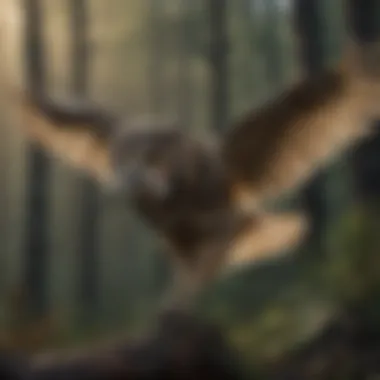
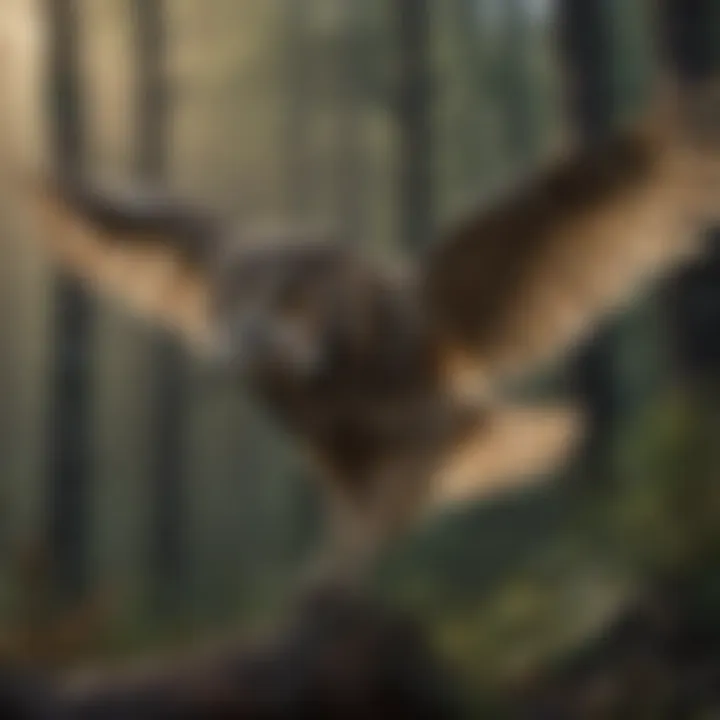
Factors that contribute significantly to conservation status include:
- Legal Protection: Some woodpecker species are protected under national or international laws, which aim to mitigate threats from both habitat loss and predation.
- Habitat Management: Efforts to maintain and restore natural environments are paramount. These initiatives can bolster woodpecker populations as habitats become more resilient against predators.
- Community Awareness: Educating local communities about the roles of both woodpeckers and their predators fosters a more symbiotic relationship between them. This is where homeowners and housewives can play a vital role in supporting conservation efforts.
Encouraging discussions and implementing initiatives that protect woodpecker habitats can promote better overall balance in local ecosystems.
Human Influence on Woodpecker Predation
Human activities markedly shape the dynamics of predator-prey interactions within ecosystems, particularly concerning woodpeckers. As we encroach on natural habitats, our influence alters not just the landscape but also the delicate balance that exists within it. Understanding how human-induced changes affect woodpecker populations provides insights into broader ecological implications as well.
One significant factor is urbanization, which impacts both the availability of resources and the safety of these birds. As cities expand, the natural nesting sites and food sources that woodpeckers rely upon become fragmented or entirely removed. This leads to increased stress on woodpecker populations as they adapt to a disrupted habitat. As they find themselves living closer to human structures, exposure to predators may also rise.
"The woodpeckers' adaptability can only stretch so far when faced with persistent human-driven changes in their homes."
Urbanization and Its Effects
Urbanization introduces a host of challenges for woodpeckers. Firstly, the construction of buildings and infrastructure not only facilitates habitat loss but also creates barriers that hinder movement. Woodpeckers, specialized in foraging for insects in trees, often find fewer trees in urban settings, leading them to forage in less ideal areas where they may be more vulnerable to predators.
Some specific effects of urbanization include:
- Food scarcity: As traditional foraging grounds diminish, woodpeckers may have to compete more fiercely for dwindling resources.
- Increased predation risk: Predators such as domestic cats often thrive in urban settings. Studies have shown that such predators can significantly impact local bird populations, including woodpeckers.
- Nest site availability: Woodpeckers carve out their nests in tree trunks. With fewer trees, finding suitable nesting sites becomes harder, which puts pressure on their reproductive success.
Ecosystem Disruption
Ecosystem disruption arises from various human activities, including habitat destruction and climate change. Both have profound impacts on the food webs that support woodpecker populations.
When human intervention disrupts ecosystems, it often leads to:
- Altered predator populations: Removal of certain species or introduction of others can disturb natural predator-prey relationships. For instance, invasive species may proliferate in the absence of their natural predators, heightening risks for woodpeckers.
- Climate implications: Changes in climate can affect migratory patterns and food availability. Woodpeckers, reliant on specific ecosystems, may find that the insects they depend on do not emerge in sync with their breeding cycles.
- Habitat fragmentation: Physical barriers can isolate woodpecker populations, limiting gene flow and leading to vulnerabilities due to inbreeding and reduced genetic diversity.
In summary, human influence permeates through urban development and ecological disruption, casting a long shadow on woodpecker survival. It beckons a call for responsibility in managing landscapes and ensuring that these resilient birds can thrive within their natural habitats, balancing our needs with nature’s delicacy.
Conservation Efforts for Woodpeckers
Conservation efforts directed towards woodpeckers are crucial for the intricate web of life in which these birds exist. Given their role in ecosystems as foragers and tree excavators, preserving their populations carries significant ecological ramifications. Unfortunately, the threats woodpeckers face—from habitat loss to increasing predation—have become too great to ignore. Thus, understanding and implementing effective conservation strategies is imperative to safeguard these resilient birds.
Habitat Protection
Habitat protection serves as the bedrock of conservation efforts for woodpeckers. When trees are cut down or altered, not only are the woodpeckers affected, but the entire ecosystem suffers. Woodpeckers rely heavily on dead or decaying trees for nesting and feeding. These trees provide crucial habitats for insects, fungi, and other species, making them a fundamental component of the ecosystem.
- Preservation of Old-Growth Forests: Old-growth forests, often teeming with biodiversity, host various species of woodpeckers. Protecting these habitats is vital, as they foster not just woodpeckers but numerous other wildlife.
- Reforestation Initiatives: Encouraging reforestation can help restore lost habitats. Planting native tree species can create new feeding and nesting sites, aiding in woodpecker recovery.
- Creating Wildlife Corridors: These corridors enable woodpeckers to move between habitats safely. By connecting fragmented landscapes, wildlife corridors enhance genetic diversity and improve survival rates.
The importance of habitat protection cannot be overstated. As the saying goes, “You can’t have your cake and eat it too.” In terms of conservation, fostering an environment where woodpeckers can thrive is essential.
Community Initiatives
Community involvement plays a pivotal role in the conservation of woodpeckers and their habitats. When local people rally together, their collective efforts can lead to impactful changes on the ground. Here are some ways communities can contribute:
- Educational Programs: Schools and local organizations can implement educational initiatives to raise awareness about the importance of woodpeckers and their habitats. Educating the younger generation fosters a sense of responsibility towards nature.
- Volunteer Movements for Clean-Up: Community clean-up efforts help eliminate waste and pollution in woodpecker habitats, ensuring safer environments for these birds.
- Citizen Science Projects: Engaging community members in monitoring woodpecker populations provides valuable data for researchers. Observers can report sightings, nesting behaviors, and other interactions, contributing to ongoing studies.
Adopting this community-driven approach allows individuals to feel more connected to their environment. As it’s commonly said, “Many hands make light work.” By pulling together, communities can create a meaningful difference in conserving woodpecker populations.
"Collective efforts not only protect woodpeckers but also foster a deeper appreciation for the beauty and necessity of biodiversity."
As we forge ahead, understanding the importance of both habitat protection and community initiatives may lead us to a brighter future for woodpeckers. By standing together, we can safeguard these remarkable birds and maintain the delicate balance of our ecosystems.
End
As we wrap up the discussion about the predators that woodpeckers face, it's crucial to recognize how these threats interact with and shape the delicate balance of our ecosystems. Understanding the consequences of predation is vital not just for woodpeckers, but for the biodiversity that hinges upon their health and survival. Each predator plays a role in controlling woodpecker populations, which can ripple into various ecological facets.
Summary of Key Points
In this article, we have delved into several key components:
- Predation is Natural: Predators such as mammals, birds, and reptiles influence woodpecker populations significantly. These relationships are intricate and, in many cases, essential for a thriving ecosystem.
- Behavioral Adaptations: Woodpeckers possess unique adaptations to counter predator threats. Their foraging techniques and nesting habits have evolved to enhance survival rates against predatory risks.
- Impact of Human Activity: Urbanization and ecosystem disruption present new challenges to woodpecker populations. Understanding these impacts is fundamental for conservation efforts.
- Conservation Efforts: Ongoing habitat protection and community initiatives play critical roles in maintaining woodpecker populations amidst ever-increasing threats.
Future Directions for Research
Looking ahead, several areas of research could enhance our understanding of woodpecker predators and their interactions:
- Behavioral Studies: More in-depth observational studies on how woodpeckers adapt in real-time to the presence of predators could yield vital insights. This includes examining their alarm calls and evasive maneuvers during predation threats.
- Population Dynamics: A closer look at the balance between predator and prey populations can inform ecological management strategies. Tracking changes in land use and their effects on these dynamics is crucial for conservationists.
- Human Impact Analysis: Research that assesses the long-term impacts of urbanization on woodpecker habits and habitats will carry significant weight in future conservation policies.
- Community Engagement: Investigating ways to enhance community involvement in woodpecker conservation can bridge gaps between wildlife needs and human activity, ultimately fostering a more harmonious coexistence.
By focusing on these areas, we can deepen our comprehension of woodpecker ecology and find new avenues for effective conservation. The tale of woodpeckers is not just about them; it’s a stark reminder of the interconnectedness of all species in our world.







